 | E-mail to Birds Korea |
 | KWBS |
in the Region
 | The Oriental Bird Club |
 | BirdLife International (Asia) |
January
In occasional periods of extreme cold many smaller rivers and reservoirs freeze over. Temperatures often drop to -5°C at night, and stay near freezing in the day. Periods of light snow and severe cold are usually followed by milder temperatures for a few days, and then severe cold again.
Mid-winter specialties include Baikal Teal (in often huge concentrations) and Scaly-sided Merganser, Swan and Lesser White-fronted Goose, Steller’s Sea Eagle, Relict and Saunders’s Gulls and Solitary Snipe! Red-crowned and White-naped Cranes and Cinereous Vultures are concentrated in the Cheorwon basin, with Hooded Cranes at Seosan and Suncheon in the south, and huge numbers of ducks and geese at the Geum and in Haenam. Milder conditions on the southern island of Jeju allow species like Black-faced Spoonbill, White’s & Pale Thrushes, and even taivana Eastern Yellow Wagtails to over-winter. On the East coast, there are plenty of gulls to check through, and favoured seawatching areas such as the Guryongpo peninsula and north Gangwon Province provide chances to see Yellow-billed Loon, Long-billed Murrelet and Spectacled Guillemot along with occasionally large numbers of Ancient Murrelet and smaller groups of Rhinoceros Auklet.
National highlights in recent years have included Lesser Whitethroat, Asian Rosy Finch, Red-crested Pochard, and White-bellied Green Pigeon.
Recent Korean firsts in January have included a Plumbeous Water Redstart at Daejon in 2006, a Desert Wheatear at Pohang in 2008, and in 2009 the first and second records of King Eider, both on the East coast.
(The following records are a compilation of our own sightings and records sent in by other observers. As well as being posted on the Birds Korea website(s), selected records are also forwarded to other Korean-language birding websites; records of threatened species are arranged and forwarded to Birdlife International and national authorities when appropriate; flag images and records are passed to bodies responsible for their coordination throughout the flyway; and all records sent to us are used to compile annual reports and to support the evolving understanding of the status of many of Korea’s birds.)
Seoul, January 27
The day started at the Ilsan Lake Park with a visiting birder from Hong Kong, in search of waxwings. However, close to 1.5hrs of search failed to locate any waxwings (even in the right kind of habitat). The only consolation were a pair of unusually bold Chinese Nuthatch and a brilliant male Long-tailed Rosefinch. Apart from that there were the usual wintering species.
Later in the day, we moved to Paldang in search of the rarities that have been spotted this winter. Birds of note here were 3 Steller’s Sea Eagle, 4 White-tailed Sea Eagle, at least 1 Water Pipit (thanks to Tim Edelsten for help with the ID), 5 Eurasian Bullfinch, 3 Hawfinch, 3 Long-tailed Rosefinch, 6 Long-billed Plover and the usual waterfowl in the Han River. At total of 53 species were found that day.

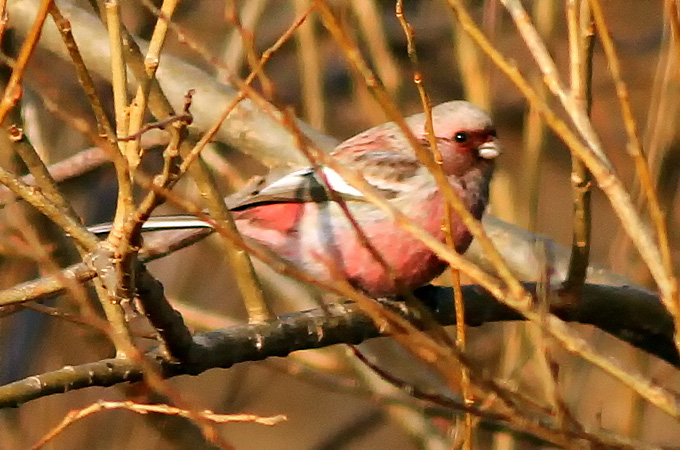

East Coast-West Coast and South Coast, January 25 - 30
Suncheon Bay and Joonam Reservoir, January 30
A mild -2C overnight (-4C in the mountains near Gwangju) rose to a spring-like +12C during the afternoon, under clear skies. At Suncheon Bay, despite the construction and disturbance from “green cyclists”, 250 Hooded Crane were seen well in the fields (happily, none flushed by us), along with a Rough-legged Buzzard, 3+ Chestnut-eared Bunting (and dozens of Pallas’s Reed, several Common Reed, Black-faced, Meadow and Little Buntings), a dozen or so Chinese Penduline Tit (some of which were seen well), six Japanese Quail and 30+ Lapland Longspur. Further interest was provided there by 2-4 Hooded Crane seen to spiral and depart north, at one time joined by three spiralling White-naped Crane, and on the tidal-flats a single distant Swan Goose (in with a flock of 25+ Taiga Bean Goose), 3-4 Baikal Teal, and 4 Ruddy Shelduck (latter rather rare in the southern provinces). Taking the newly-opened expressway on our way back to Busan (and not stopping at Hanam to see the two ridiculously tame Russian-ringed Red-crowned Cranes there) we then headed to Joonam, where also again noisy and disturbed but still bird-rich. Despite the lack of appropriate management some excellent birds here too, with best 85 White-naped Crane, ten Baikal Teal, increased numbers of aythya and thrushes (including c. 6 Pale Thrush ) and a sub-adult Lesser White-fronted Goose.
To continue the run of end-of-day surprises, the last bird of the day / first bird of the night was a medium-sized owl (longish-tailed, with an obvious pale x on the face) perched on wires over the congested expressway, about 2km west of the West Busan IC. Due to the honking truck behind us (we did try to stop after all …) and the poor light (only from car headlights and some street lights) views were sadly insufficient to make an ID.

Geum Estuary and Saemangeum, January 29
In much milder conditions (with a dawn minimum of 0C, rising to +9C by late afternoon) some more excellent birding – including evidence of early northward migration (mostly comprised of skeins of grey geese). In the outer Geum, 48 Swan Goose out on the flats, three Common Greenshank in their regular spot, and nearby a female American Wigeon (grey-headed, purplish-pink flanked with glossy-white axillaries) and one or more “Yellow Sea Gulls”, along with c. 100 Far Eastern Oystercatcher. A search through grey geese flocks near the Geum barrage then found one (or possibly two) Lesser White-fronted Goose, a flock of 250+ Lapland Longspur but no sign (at range) of the Baikal Teal flock apparently reported here (via Jason Loghry) on the 26th. Moving south to the former Mangyeung Estuary / Saemangeum, several rosacea Eurasian Bullfinch, Long-tailed Rosefinch and Pallas’s Rosefinch, 30+ Meadow Bunting and two Pale Thrush heard near Simpo, where also a single flock of 65 Common Starling (perhaps the largest such flock yet reported on the Korean mainland?), two more flocks of Lapland Longspur (of 30 and 150) and distant views of 5+White-naped Crane and 140 Baikal Teal. Our search through corvid flocks there found probably 10,000 Rook but only 10-15 Daurian Jackdaw, happily including three superb pied adults. A group of 15 Falcated Duck in Gimje was followed shortly after by the sighting of a flock of several thousand Rook flying like Baikal Teal and then, near Buan two distant flocks of the real deal – seen from the expressway at late dusk. Although the flocks were distant (and the ID was simply based on flock-size and form, as the flocks merged) NM estimated probably 250,000 birds present, all presumed to be Baikal Teal.
North River, Misari and Song Do, January 28
Another excellent day! FD, BS and NM headed west over the mountains (where a minimum of -23C), to a different stretch of North Riverwhere it was a milder (!) -13C at dawn. There, highlights included four Scaly-sided Merganser, excellent views of Siberian Accentor and another White-tailed Eagle. At Misari, staying on the main walk and cycle track, we then enjoyed excellent views of an adult Steller’s Sea Eagle sitting on the ice, several Long-billed Plover (11 present), Japanese Wagtail, Long-tailed Rosefinch and Siberian Accentor and also two Water Pipit. There was sadly no sign of the Meadow Pipit or domestic-type greylag, but instead a largely-white domestic goose of greylag origin…Further continuing the “Misari Intrigue” among one tit flock was a Marsh Tit-type (very poorly imaged) that looked greyer-toned and seemed to show more obvious pale on the wing (not only on the secondaries, but also on the tertials) as well as a slightly scruffier look to the bib than the other Marsh Tits in the same flock. As temperatures then soared to +1C under increasingly overcast skies, we returned to Song Do, where to the depressing background of bulldozers and dump-trucks, we still managed to enjoy nine Relict Gull, 274 Saunders’s Gull and c 560 Eurasian Curlew.
To round-off the day, en route to the old golf-course FD spotted a large flock of thrushes and Brambling (80) by the side of the road. Inside a small park there, we found at least 205 thrush, including probably 120 Naumann’s, 80 Dusky (and several hybrids between them), one presumed Black-throated x Red-throated Thrush hybrid and a First-winter male Black-throated Thrush.

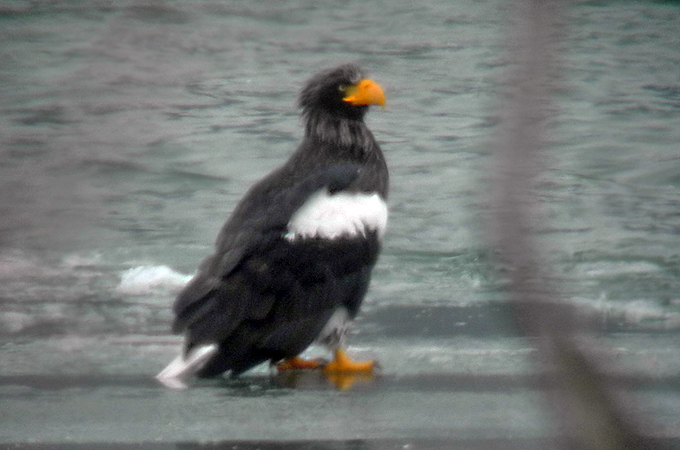

Gangneung-Geojin-Sokcho-Yangyang, January 27
A truly excellent day of winter birding – really at its very best! There were similar temperatures to the 26th (min -10C/ max -3C) though increasingly windy along the east coast. Pretty much the first bird of the day was Pallas’s Rosefinch and several more were soon seen well, in trees and feeding on the snow-covered ground at Geojin (at one spot, along with rosacea Eurasian Bullfinches). With the afternoon boat cancelled due to winds and sea-swell, seawatching from the headland still found a fly-by Yellow-billed Loon (JT), 5+ Brunnich’s, c.10 Common and two Spectacled Guillemots, and (perhaps) best of all two Long-billed Murrelet (one extremely distant, the other rather closer). Near Daejin harbour, in addition to close encounters with more Long-tailed Rosefinch and Siberian Accentor, we enjoyed another rather closer Spectacled Guillemot soon followed by two more Glaucous-winged Gull, some small groups of Ancient Murrelet, and best of all a Yellow-billed Loon (again first found by JT) watched well by all of us at medium range.
From there both teams then drove south, first stopping off at Sokcho. We soon found the heavily-twitched male Bufflehead that had been found the previous day (apparently by Park Jong-Gil and perhaps others?). This energetic bird seemed especially attached to one particular female Common Goldeneye (even displaying) while chasing away rather more suitable suitors. Collections of waterbirds are not (yet) at all popular in the ROK. Moreover, the species has already been recorded in northern Japan in mid-winter on several previous occasions (by 1990 “fewer than 15 records but involving up to 23 birds” – according to Brazil’s 1991 book). Bufflehead is therefore considered an uncontroversial, straightforward and most welcome first addition to the national list in 2013. Moving further south still, Team Denmark then found an immature Steller’s Sea Sea Eagle at Yangyang, while both teams also enjoyed brief but good views there of a / the Chinese Grey Shrike and another Rough-legged Buzzard.

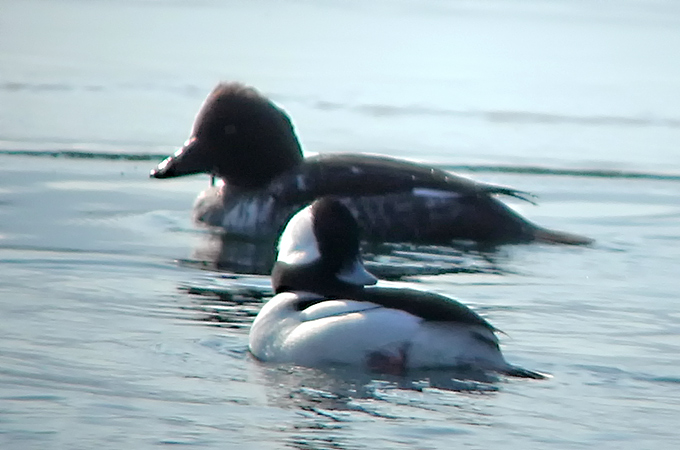
North River-Song Do, January 26
In calmer, sunny conditions (with a min. of -10C and a max of -3C), prolonged, excellent, undisturbed views of 10 Scaly-sided Merganser on the river under azure blue skies, where also five Long-billed Plover, three Siberian Accentor, 4-5 fly-over Pallas’s Rosefinch and two or three White-tailed Eagle. At Song Do, on the incoming high tide, many fewer birds than a week before, but still excellent, hour-long views of eight Relict Gull watched in great light.
Busan-Gyeongju-Guryongpo, January 25
In cold and windy conditions for the south-east (with a maximum temperature of zero), single Hen Harrier, Rough-legged Buzzard and two White-tailed Eagle were on the river near Gyeongju, along with six Falcated Duck and a much less seasonal Eurasian Hoopoe. At Guryongpo, the “Glorious Team Denmark” (along with NM) then found and photographed a small white-winged gull that we identified as an adult Iceland Gull, either nominate glaucoides or perhaps more likely an extremely pale-end kumleini (note the hint of darker markings in the primaries and the longer than expected bill). A separate blog-note on this bird will likely be posted shortly. Other species of note seen in / over increasingly rough seas included at least two Glaucous-winged Gull, probably 2000 loons (mostly Arctic), c. 60 Harlequin Duck, 60 Rhinoceros Auklet, 50 Ancient Murrelet and a single Brant Goose.
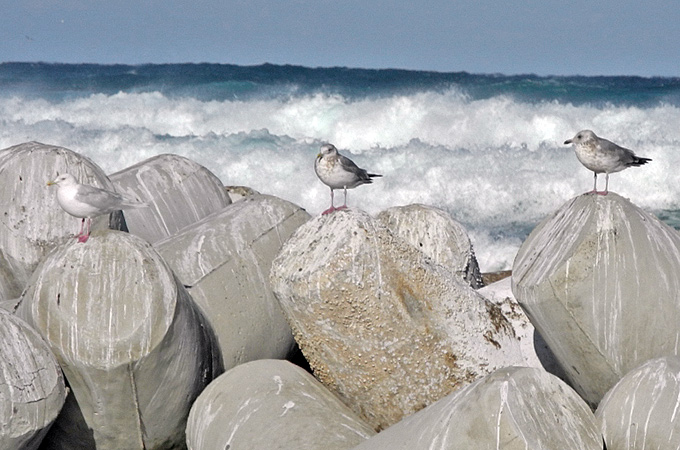

Sokcho, Gangwon Province, January 27
At the almost completely frozen Yongrang Lake in the early morning, I quickly caught up with Korea's first ever Bufflehead, a superstar surrounded by an entourage of travelling paparazzi. It fraternised with a party of Goldeneye, although dived for noticeably longer periods and appeared generally more active, wide-ranging and restless.
Also in the area were 3 adorable rosaceae Northern Bullfinch and other winter regulars including several Smew, Greater Scaup, Common Merganser, Coal Tit and about 8 Northern Lapwing.
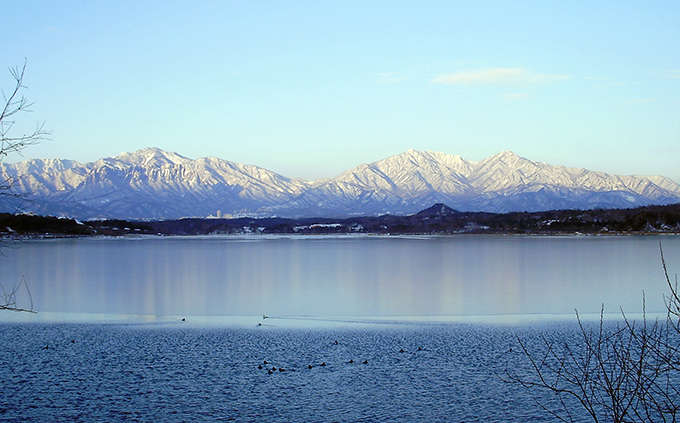
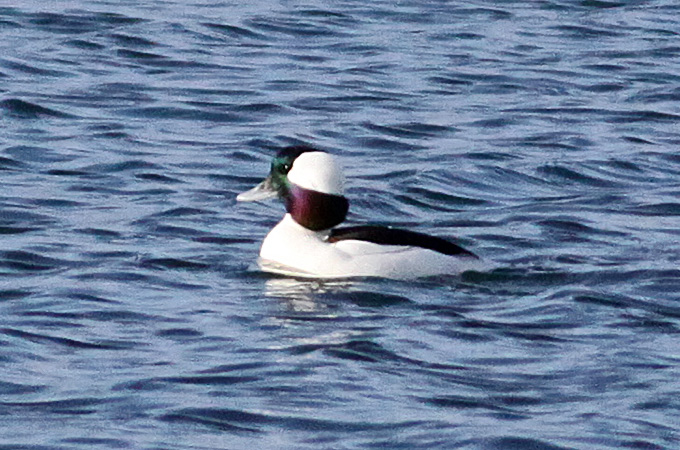

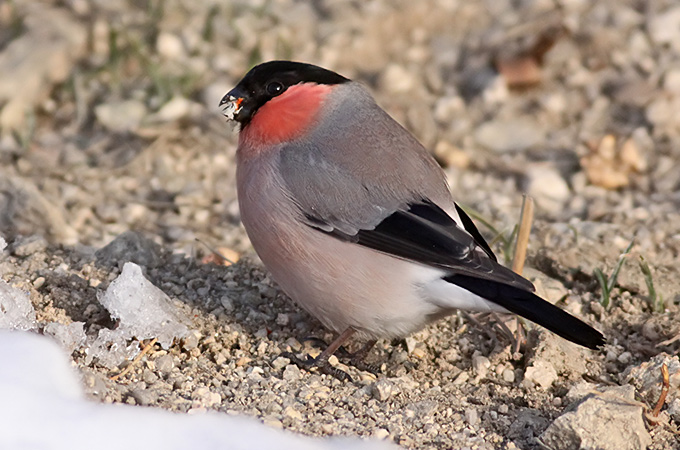
Republic of Korea, January 11 - 23
“Team Albatros” (Jürgen Schneider, Dr. Klaus Handke, Heidi & Manfred Reetz, Dr. Peter Berndt, Norbert van Bebber, Dr. Lothar Biesert and Dr. Nial Moores) “birded Korea” between January 11th and January 23rd. In weather conditions that ranged from cold and crisp (most days) to occasional blizzard conditions (on 17th) and grey and wet (on 21st and 23rd) we birded Ilsan and the National Arborteum on 11th; Cheorwon and Song Do on 12th; Paldang and “North River” on 13th:, the northeast coast on 14th-16th; the east coast on 17th; Jeju on 18th and 19th; the Nakdong Estuary and Joonam on 20th; Suncheon Bay on 21st; Saemangeum, Gomso Bay and parts of the Geum Estuary on 22nd; and Namhansan and central Seoul on 23rd. In total, we recorded approximately 185 species (a new 2-week mid-winter record) including several records of national ornithological interest. The winter is proving remarkable for the small number of several duck species (most especially Baikal Teal) but the large number of landbirds – providing some of the most enjoyable and varied winter birding for several years. While a fuller report will likely follow later, some of the more notable observations include (with an emphasis on species of global conservation concern, high counts and unexpected records):
Nine Swan Goose Anser cygnoides on 21st at Sunchon Bay (the main wintering site in the Geum Estuary was not visited);
A single First-winter Lesser White-fronted Goose Anser erythropus at Joonam on 20th;
The disputed Greylag Goose Anser anser at Paldang on 13th (seen during its discovery by Gwak Ho-Kyong). Some of the group (e.g. KH) are much experienced with the species in Europe and saw the bird swimming. Seeing it at some distance they believed it to be a typical Greylag. Close-up images, however, reveal a rather swollen-looking rear-end, breast and neck, suggestive of some domestic goose influence. Greylag Goose is not recorded annually in the ROK.
Baikal Teal Anas formosa found on only three dates, with no large flocks found and the highest count a mere 50 at Suncheon Bay on 21st. We are still unaware of any large flocks being found anywhere in the ROK this winter: has the bulk of this species relocated to other areas in or outside of the ROK or has it suffered a catastrophic decline?
Nine Scaly-sided Merganser Mergus squamatus at one location on the North River on 13th;
Two Yellow-billed Loon Gavia adamsii on 15th and three on 16th, including one watched for 30 minutes at close range in Daejin harbour as it tried to swallow an over-large fish;
Single Oriental Stork Ciconia boyciana at Gomso Bay on 22nd (the decline apparently continues…);
Between 20 and 25 Black-faced Spoonbill Platalea minor at the regular sites in eastern Jeju;
Three adult Steller’s Sea Eagle Haliaeetus pelagicus at Paldang on 13th;
Four Rough-legged Buzzard Buteo lagopus (one at Yangyang, one at Suncheon Bay and two at the Manyeung) but only one Upland Buzzard Buteo hemilasius ( at Gomso);
Single Greater Spotted Eagle Aquila clanga at Hadori on 18th;
An adult Siberian Crane Grus leucogeranus in eastern Jeju at dusk on 18th. This stunning individual was apparently found and photographed by Oh Gyeong-Seok on 17th. We located it in the same small roadside wetland (at one time feeding alongside a Black-faced Spoonbill!) thanks only to timely information provided most kindly by Tim Edelsten and Dr. Shim Kyu-sik. This species is being recorded with increasing frequency in the ROK with one or two records most years this decade.
A total of 360 White-naped Crane Grus vipio, with observations on four dates and a high count of 250 in Cheorwon on 12th;
Approximately 40 Red-crowned Crane Grus japonensis in Cheorwon on 12th;
Two first-winter Common Crane Grus grus in a flock of 495 Hooded Crane Grus monacha counted by KH at Suncheon Bay on 21st;
Six Solitary Snipe Gallinago solitaria in the National Arboretum on 11th;
A total of 715 Saunders’s Gull Chroicocephalus saundersi (with 224 at Song Do, 250 at Suncheon Bay and 220 at Gomso Bay the largest counts);
Eighteen Relict Gull Ichthyaetus relictus at Song Do on 12th. This is the largest day-count in the ROK for several years;
Two “Yellow Sea Gull” (Larus mongolicus?) at Song Do on 12th and approximately 80 at Gomso Bay on 22nd. The latter count is the largest site count known to us of this perplexing taxon that to us shows several features not shared by other large gulls. The images by Jürgen Schneider are the best so far known to us and will feature in a note on the species to be posted by Birds Korea sometime in the near-future.
One adult Steppe Gull Larus heuglini barabensis at Daejin on 14th;
A presumed new national high-count of 25 Thick-billed Murre Uria lomvia from the Daejin boat on 16th in only 90 minutes (before high seas made further observations impossible);
A total of five Common Murre Uria aalge (including three together on 16th off Geojin);
Only six Spectacled Guillemot Cepphus carbo (two on 14th and four on 16th) also off Geojin;
Four Crested Murrelet Synthliboramphus wumizusume on 19th (two ‘scoped well from land, one from the ferry and one very distantly from Mara Do) were all already in full-breeding plumage (unlike any of the Ancient Murrelet Synthliboramphus antiquus we recorded during the trip);
A distant dove seen during the rain at Suncheon bay on 21st sitting on wires with a large flock of Streptopelia orientalis was in direct comparison obviously smaller and longer-tailed than them, and appeared to show a grey head, pinkish underparts and a pale panel on the wing. Confident identification could not be made, but Spotted Dove Spilopelia chinensis (two previous ROK records) was considered the most likely possibility.
One Eurasian Wryneck Jynx torquilla on Mara Do on 19th is believed to be the first confirmed mid-winter record of the species in the ROK;
One Chinese Grey Shrike Lanius sphenocercus at Yanyang on 16th;
Singles or small numbers of Bohemian Waxwing Bombycilla garrulus recorded on three dates;
Japanese Waxwing Bombycilla japonica recorded on five dates, with highest counts of 22 in Jeju City on 18th and 22-25 in Seogwipo on 19th;
Two Yellow-bellied Tit Periparus venustulus together in Jeju City on 18th (this species was perhaps first recorded on Jeju only in 2012);
Two Light-vented Bulbul Pycnonotus sinensis were still present (in a blizzard!) on the Guryongpo Peninsula on 17th;
At least three Chinese Nuthatch Sitta villosa were in Ilsan lake Park on 11th;
Twenty-five Red-billed Starling Spodiopsar sericeus were with 65 White-cheeked Starling Spodiopsar cineraceus and two other starling species in Busan on 20th;
A single male Chestnut-cheeked Starling Agropsar philippensis was in the mixed starling flock in Busan on 20th. This is believed to be the first mid-winter record of this species in the ROK;
Four Common Starling Sturnus vulgaris were also in the mixed starling flock in Busan on 20th (first Busan record?);
One first-winter male Red-throated Thrush Turdus rufficollis on the 15th was the only one found despite above-average numbers of thrushes found at many sites.
A flock of 380 Russet Sparrow Passer rutilans in northern Pohang on 17th;
Single Eastern Yellow Wagtail Motacilla tschutschensis and Richard’s Pipit Anthus richardi were both heard on Mara Do on 19th (with an Eastern Yellow also heard at Hadori on 18th);
The ROK’s second Meadow Pipit Anthus pratensis was apparently found and photographed by Kim Hwa-Jeong (?) at Misari / Paldang on 12th, and was heard and seen poorly by us there on 13th (and later by several other observers, including Dr. Shim Kyu-Sik).
In the same area as the Meadow Pipit, three Water Pipit Anthus spinoletta were also seen by other observers, with one of these well-seen by our team.
Long-tailed Rosefinch Uragus sibiricus recorded on eight dates, with twelve on both 15th and 16th;
Pallas’s Rosefinch Carpodacus roseus recorded on six dates, with the highest day count bring 50 in only two hours in Geojin on 16th;
Eurasian Bullfinch Pyrrhula pyrrhula recorded on 11 dates, with the vast majority of those actually seen (about half out of the total of 130 logged) considered to be rosacea. A single male griseiventris type (or griseiventris following a 1992 paper by Morioka) was also seen in Gangneung on 14th; with a cassini type in the National Arboretum on 11th (JS and KH only) and one male cassini also at Hwasun Gotjawal Eco-park in Jeju on 19th.
Chinese Grosbeak Eophona migratoria recorded on five dates (total of 31 individuals);
One or two Japanese Grosbeak Eophona personata were with Chinese Grosbeak on Jeju on 18th;
Eleven Grey Bunting Emberiza variabilis were heard (with 1-4 seen by several of the team) on Jeju on 19th.
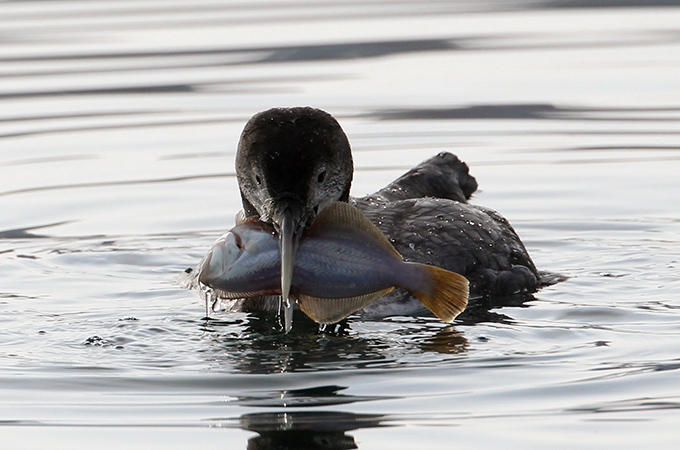


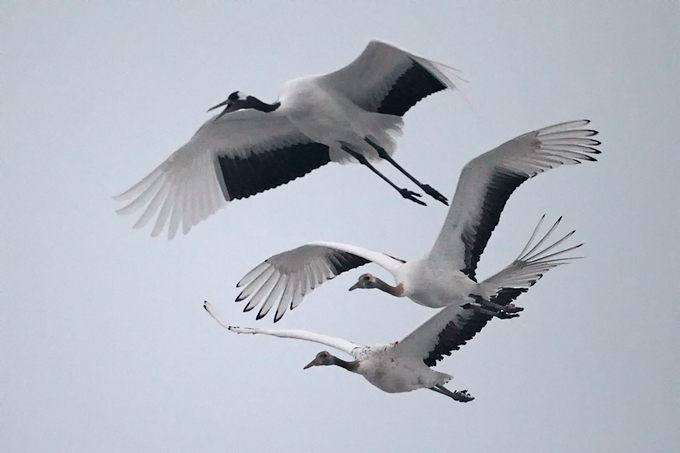

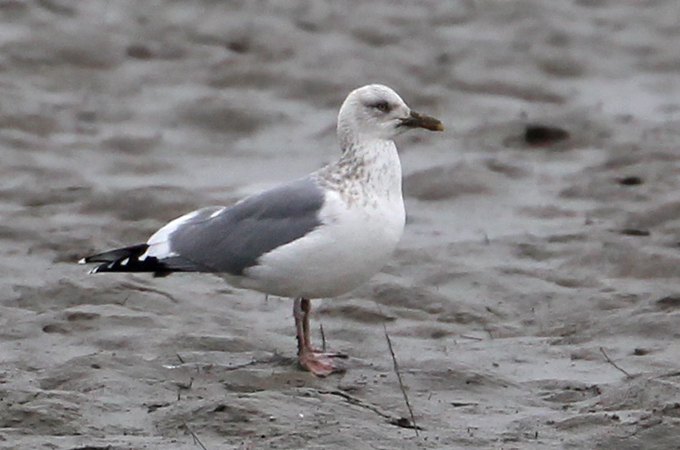


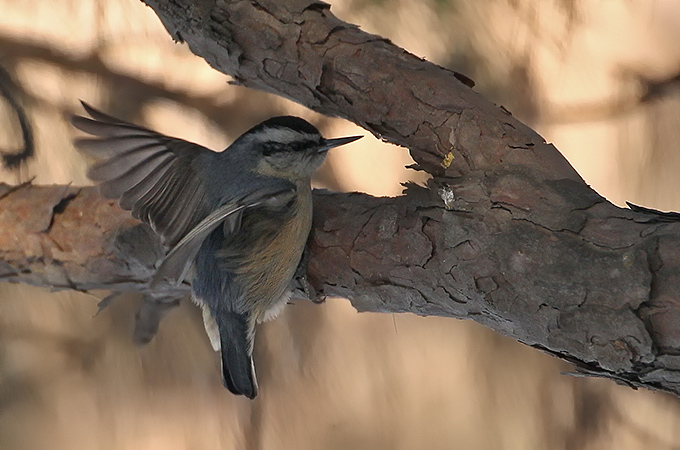




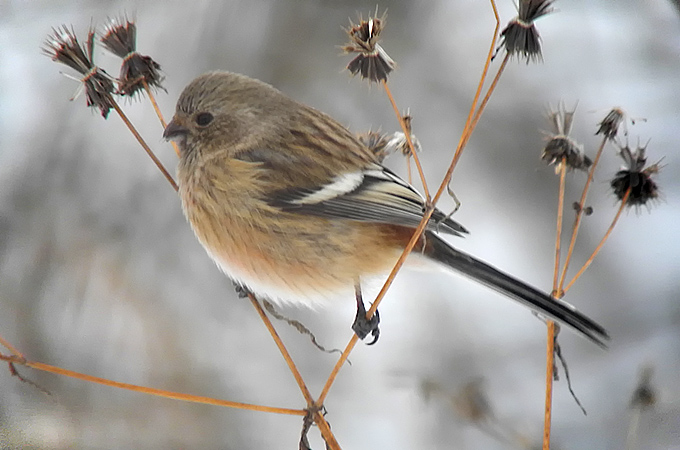
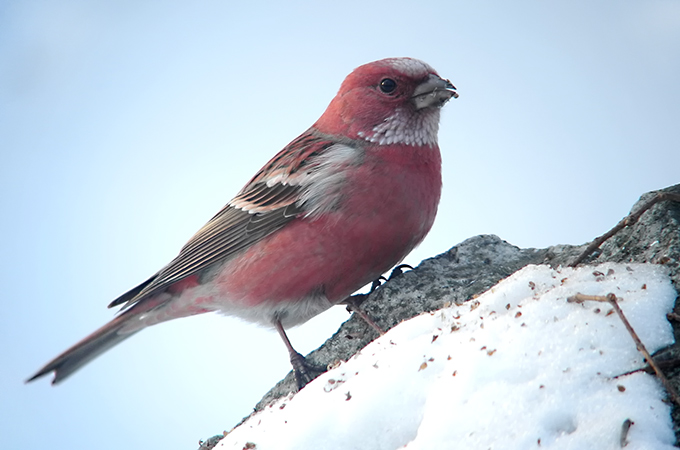
Misari, January 20
On the Han river, best sightings were of a Water Pipit, 3 Steller's Sea Eagle (2 adults and a juvenile), and an apparent rubrirostris Greylag Goose. This individual spent much time roosting on an islet, and showed a broad orange-pink bill with slightly paler tip.
Also of interest a Chinese Grosbeak, 3 Long-tailed Rosefinch, a Siberian Accentor, 6 Little Bunting, 4 Pallas's Reed Bunting,a Hen Harrier and 6 White-tailed Eagle.
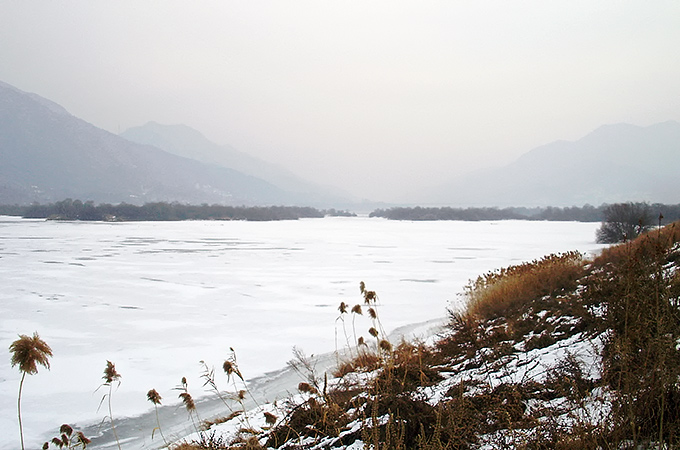

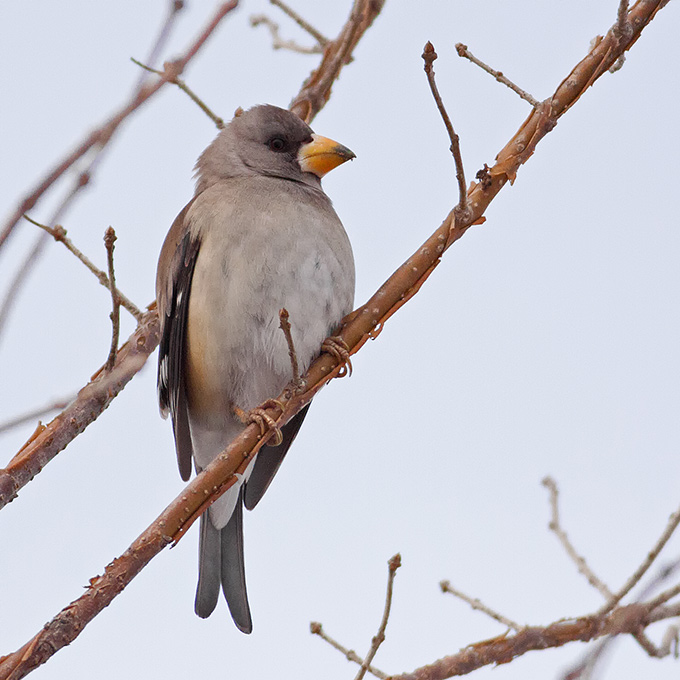

Mokpo, January 20
In the morning with nice sun but also quite hazy air a drive a bit north of Mokpo had quite a surprise for us: a Cinereous Vulture in a rice field, the first time to see this species here in the south-west corner of the peninsula. Along with it a handful of Eurasian Magpie which seemed to bother the vulture, because it flew of several times and changed position. Also seen briefly 2 Chestnut-flanked White-eye and a Daurian Redstart.
In the afternoon on the stream in front of our house a the usual birds on the water: 5 Eurasian Coot, 3 Eastern Spot-billed Duck, 1 Mallard and 4 Little Grebe. In the adjacent trees a few Grey-capped Greenfinch and Brown-eared Bulbul.

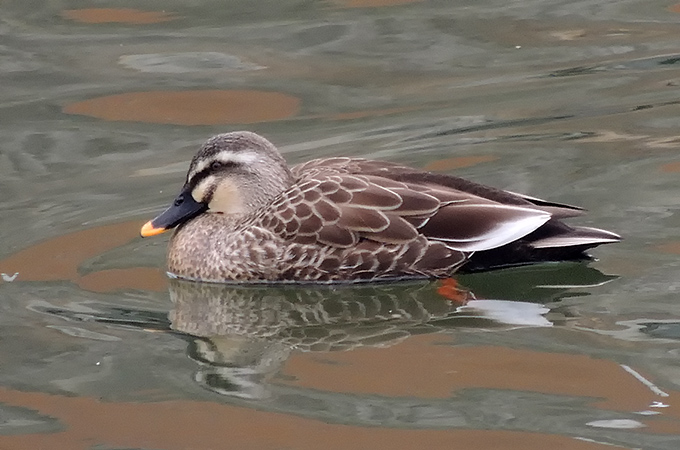
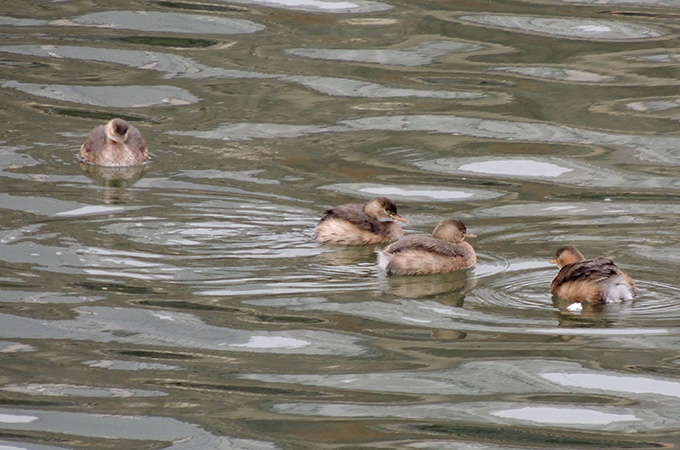
Ansan and Dongmak, January 19
Full day of birding at different spots that I used to visit more frequently in the past. At dawn, the stream coming out of the Reed Park in Ansan was completely frozen over. There was evidence of reasonable amount of activity in the reedbeds and bushes. At least 3 dozen thrushes, mostly Naumann’s and a few Dusky Thrush, 8 Eurasian Bullfinch, single digit numbers of Rustic Bunting and Black-faced Bunting. Walking along the stream, 100+ Pallas’s Reed Bunting and at least 2 Common Reed Bunting, 3 Long Tailed Rosefinch. Only raptors were a distant Eastern Buzzard and an unusually large Eurasian Sparrowhawk.
At noon, right outside Dongmak station, the most concentrated flock of thrushes I’ve ever seen. Composed of almost equal numbers of Naumann’s and Dusky, it numbered more than 50 birds within a very small area. The lagoon was completely frozen but of the streams running into it still had open water, supporting the usual winter waterfowl. Checking out for gulls in what used to be mudflats, the only ones close enough for my binoculars were 3 Black-headed Gull and 1 Saunder’s Gull. A group of 30+ Ruddy Shelduck flew over head and joined the other waterfowl on the stream near the lagoon. The other bird of note mixed with the thrushes was a Great Spotted Woodpecker.
Late in the afternoon, joined Tim Edelsten in search of rosefinches in the overgrown golf course. Birds from that part of the day are in the report below.
Incheon, January 19
Best at the old golf course, good views of 7 Pallas's Rosefinch and 6 Long-tailed Rosefinch. Also of note some 40+ Naummann's and one or two Dusky Thrush, a Eurasian Sparrowhawk, Hawfinch, Eastern Buzzard and e.g several Marsh Tit.
Many of the trees of this peaceful spot have been felled, and its predictable conversion into apartment complex is probably imminent.
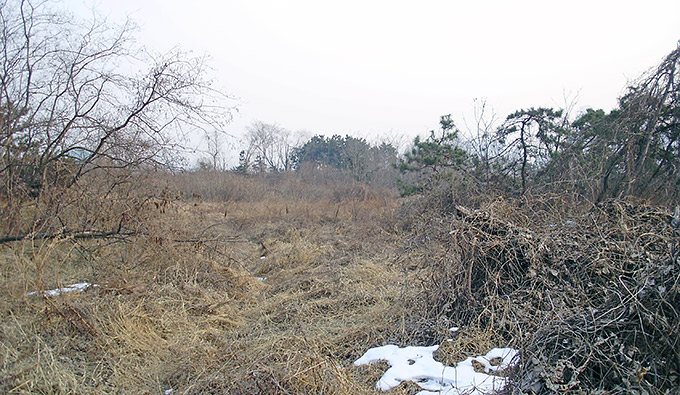

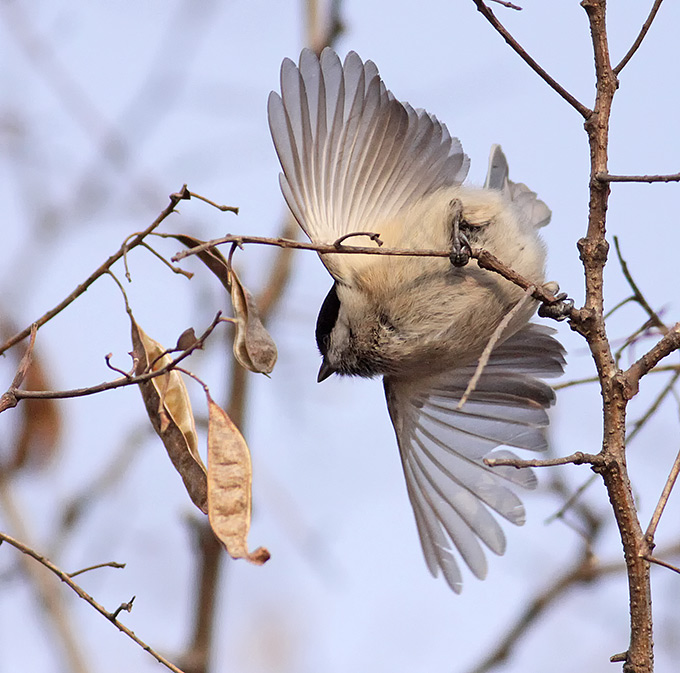
Paldang, January 13
Briefly at the riverside again, a flock of 35 Azure-winged Magpie were foraging noisily in the undergrowth, eating berries and other matter. They thrashed about through the leaf litter, constantly making their musical contact calls.


South River, January 13
As a part of our effort to understand and count Scaly-sided Mergansers, we have been surveying a particular stretch of the river extending over several tens of kilometers. Starting early in the morning, we encountered very heavy fog for the first hour or so. With visibility less than 20m at times, we initially sought out passerines. The first bird of note of the day was a Hawfinch, followed by a couple more flying over. Close by, a group of very vocal Eurasian Bullfinches entertained us for a while. There were also a flock of Brambling, a Japanese Pygmy Woodpecker and a couple of Naumann’s Thrush as well.
After the fog lifted, we scanned stretches of the river that looked promising. Waterfowl were present in reasonable numbers but no sign of the bird that we had come find. We spent the first 2 hours scanning at least 5 spots, including 2 spots where we had encountered them before. There were good numbers of Common Pochard, Scaups, Goldeneyes, Tufted Ducks, Falcated Ducks and Common Mergansers. Japanese Wagtails, Olive-backed Pipits and Long-billed Plovers were also observed. A juvenile White Tailed Eagle came very close, trying to land on a rather weak tree-top providing some excellent and rather comical views.
The first Scaly-sided Merganser was a female type bird encountered at a location that might be considered ‘disturbed’. Even though the bank was about 40m above the river, there were houses very close to the bank. Though there were other waterfowl present close by, this particular bird preferred to be on its own. It flushed when we were about 200m from it and flew downriver. A second group of bird were found a few km downriver, including stunning views of 3 males and 3 female type birds. We observed them from a ‘safe’ distance (about 250~300m) as they splashed around. Later, using cover of the trees and reeds on the river bank, SC was able to approach within 100m of the birds and observe them from the level of the river. Once again the birds preferred to be on their own and maintained some distance from a group of Common Mergansers also present nearby. The last of the birds was a male found about 5km further downstream making a total of 8 birds on this particular count.
Other birds of note encountered on this trip were a tree full of Rustic Buntings, Meadow Buntings, a hunting Eurasian Sparrowhawk and Azure-winged Magpie.
Note: The number of Scaly-sided Merganser found on this particularly day was quite low compared to our previous count 3 weekends ago, when we counted between 21 and 31 birds at 4 different sites of the river spanning a stretch of about 25~30km. 13th January was a relatively warm compared to that day, with less winds and more cloud cover. The river was however relatively ice-free on both these days.
Han River, January 12
Dark, overcast and with temperatures finally rising above zero. Although still very snowy, a great thaw is now in evidence between Dokseo and Paldang Dam. Very birdy now with e.g. 2 adult Steller's Sea Eagle, 11 White-tailed Eagle, a Long-billed Plover, c.10 Japanese Wagtail, 7 Siberian Accentor, 4 Meadow Bunting, 4 Pallas's Reed Bunting, and c.350 Rustic Bunting.
It was also a good day on the finches, with 2 shy and pretty rosaceae Eurasian Bullfinch, a Chinese Grosbeak, 8 Long-tailed Rosefinch, 8 Grey-capped Greenfinch, 300+ Brambling, 7 Siskin and 30+ Hawfinch.


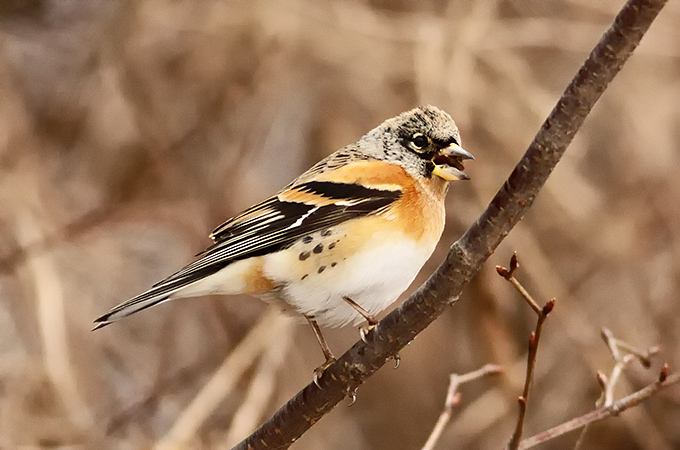

Mokpo Yeongsan-River barrage, January 11
Today's afternoon walk in mostly sunny skies to the barrage was bird wise rather disappointing - large areas were covered with ice and no birds were seen except a handful gulls circling in the sky. While walking along the lake a few ducks were spotted in the distance and also a group of gulls standing on the ice with some in the water. So the decision was made to have a walk around the adjacent "eco-park". This park is basically a reed bed surrounding a lake and streams with a boardwalk through the reed.
Surprisingly large areas of the lake and streams were ice free, and so some Eurasian Teal (c. 20) and Eurasian Coot were seen (many heard within the reed only and some seen on a bigger stream). Other birds seen were 8 female and 1 male Daurian Redstart, 2 Bull-headed Shrike and a few passing Eurasian Magpie and Brown-eared Bulbul. A White Wagtail landed for a short moment on an ice patch. Only heard were 2 flocks of Vinous-throated Parrotbill.
On the way back a flock of 11 Great Cormorant was seen flying over the river as well as a distant flock of c. 60 ducks. On the water several Great Crested Grebe could be watched diving. Also seen in a little patch of reed a small flock of c. 15 Vinous-throated Parrotbill.


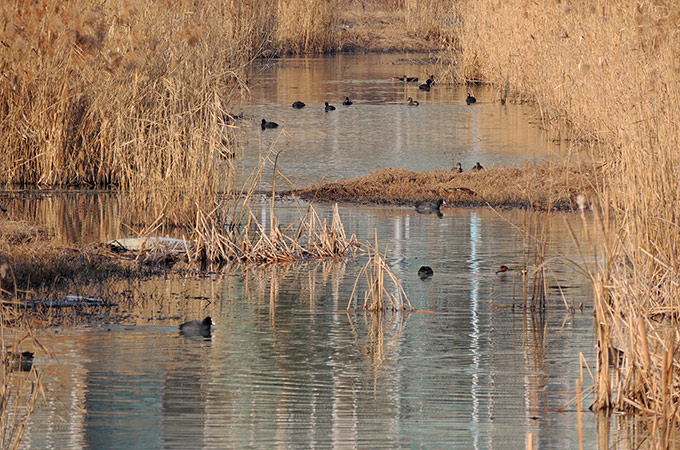
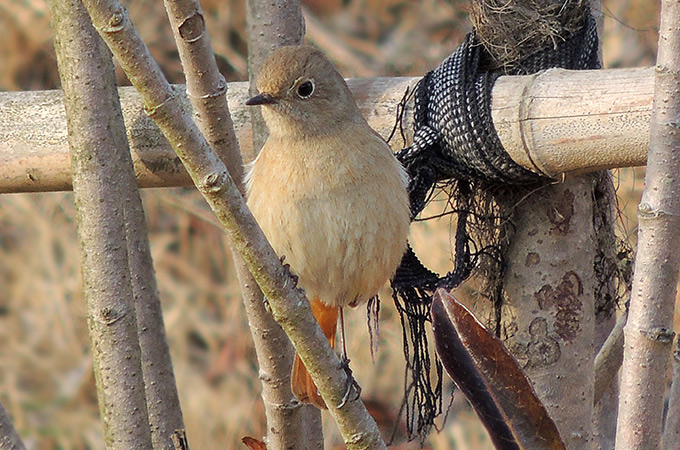
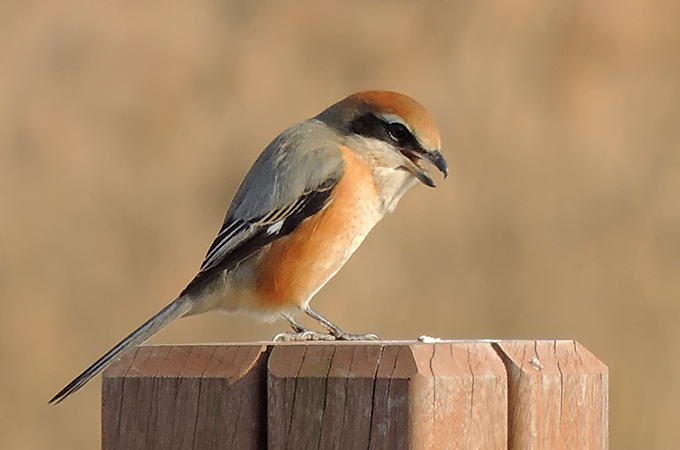
Mokpo Yeongsan-River barrage, January 9
A morning walk along the lake side part of the barrage with mostly dark clouds and occasionally small snowflakes warfing around and also the sun breakin through showed more ore less the expected species. All along the barrage c. 400 Eurasian Coot where accompanied by c. 100 Tufted Duck which stayed a little more offshore. 28 Mallard and 2 Northern Shoveler were roosting on rocks while a Common Pochard couple was busy diving most of the time. Other birds seen were a few Great Cormorants flying on and off, a single Heuglin’s Gull and a single Little Egret. On the way back 2 White Wagtails crossed the pass. On the seaside at the Mokpo’s end of the barrage 5 Great Crested Grebe, 3 Little Grebe and 1 Black-necked Grebe were seen.
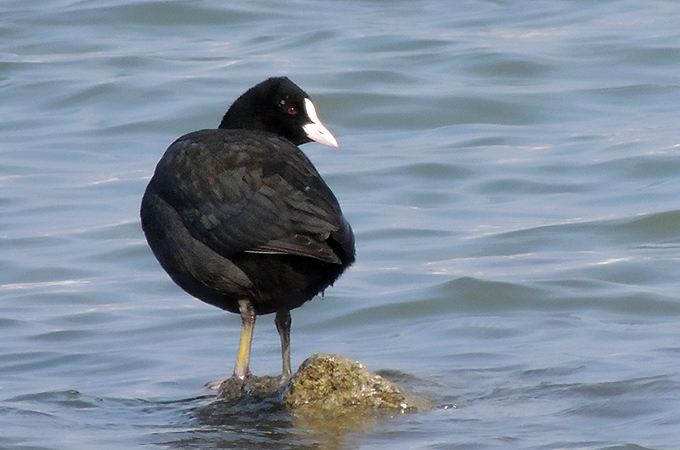

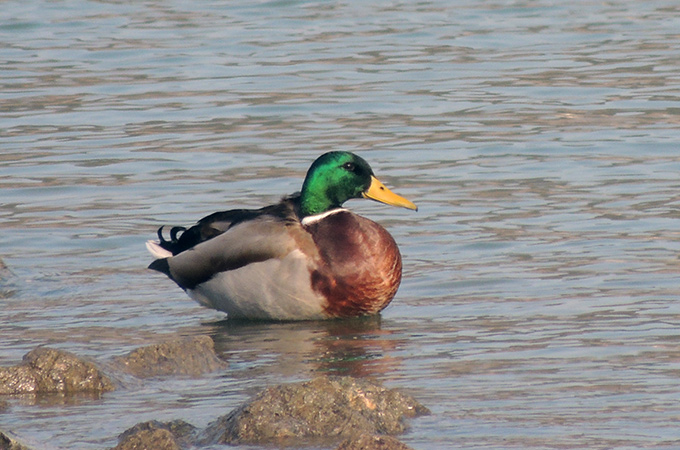

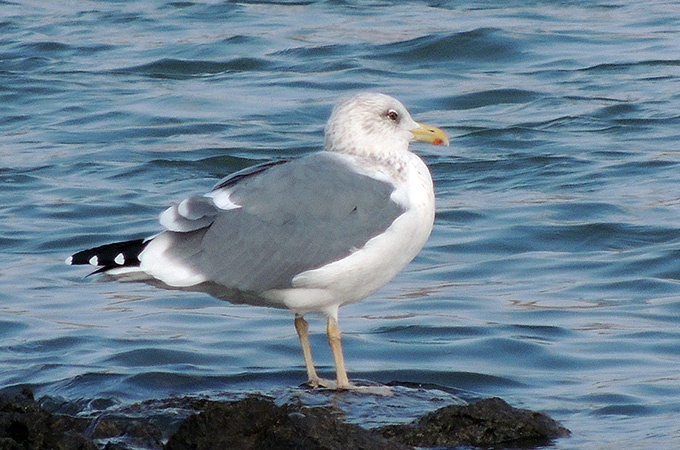

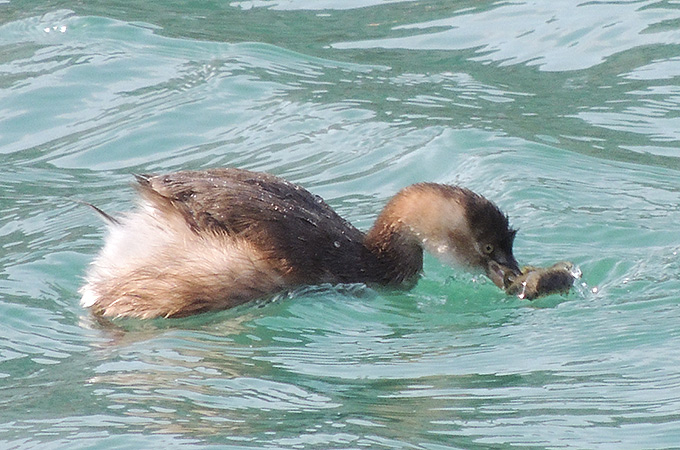

Songdo, January 5 and 6
On Saturday I thought I would try to overgrown area of Incheon Golf Course in the hope of connecting with Eurasian Bullfinch, which everyone seems to be seeing everywhere. This always a very birdy area and was alive with thrushes, at least 100, maybe twice that many, feeding on berries. Most were Naumann’s type but there were some adult Duskies and the usual intergrades. At one point a male Goshawk raced in, trying to surprise the birds (it surprised me!). There were many finches with 50 Hawfinches, 30 Bramblings and 20 Grey-capped Greenfinches, in addition to 3-4 Pallas’s and 6 Long-tailed Rosefinches. A group of 6 Bean Geese circled over and a Bull-headed Shrike was my first for a while. A male Daurian Redstart was trying to find food in the snow, as were a couple of Yellow-throated Bunting. A fat Grey-headed Woodpecker seemed to be having better luck in a dead tree. As for Bullfinches, not a peep!
Later in the morning I went over to the Sorae mudflats, now largely ice-bound. High tide was quite distant, but I estimated 600 Curlews and about the same number of Dunlin. There were quite a few interesting-looking gulls but just too far away to identify. The only close ones were 3 Common, 1 Black-headed and a feeding Saunder’s. The channel next to the new causeway had open water and many ducks were crammed in there. I counted 600 Common Pochard and 400 Northern Shoveler, with 300 Mallard, 50 Northern Pintail, 100 Common Shelducks, 5 Tufted Ducks, 2 Greater Scaup, 4 Common Goldeneye and 1 splendid drake Smew. A pair of Red-breasted Mergansers were fishing further out. 10 Grey Plover were feeding on the exposed mud with 30 Dunlin. Nearby Namdong Reservoir was almost completely frozen, but some Eastern Spot-billed Ducks and Common Teal were on the stream. More thrushes and another Daurian Redstart were in the berry bushes here, which were invaded by a large troop of 50 Vinous-throated Parrotbills. A couple of Eastern Buzzards waited hopefully along the reservoir edge. Along the edge of the park were a few Bramblings and Grey-capped Greenfinches and 5 Yellow-throated Buntings. Great, Coal and Marsh Tits were in the pines, along with a Chinese Nuthatch. Most surprising were 2 Olive-backed Pipits bobbing along under the cypress hedge. I was surprised to see these birds in mid-December – I was even more surprised to see them today in these record low temperatures and snow cover.
On Sunday, a stroll around Michuhol Park, a small urban park, yielded groups of 6 and 4 Pallas’s Rosefinches, feeding on the seeds of an ornamental plant at the edge of the park. A Long-tailed Rosefinch was a park tick for me. Otherwise, it was the usual resident (at least in winter) Great, Coal and Varied Tits, 2-3 Chinese Nuthatches, 2 Naumann’s Thrushes and a Brambling.
National Arboretum, January 5
Bitterly cold (~-20) at dawn with skies clearing after a short spell of snow. The Arboretum was cloaked in snow and most of the stream was frozen. Thankfully, the lack of wind made it possible to get out of the car and look for birds. At the entrance about 15 Eurasian Bullfinches but for most parts rather disappointing otherwise for the first hour. Then suddenly 5 Solitary Snipes (first located by BS) in one of the unfrozen part of the stream provided some amazing views. Shortly afterwards, a pair of Hawfinches were seen fighting, providing some nice photo opportunities. Birds were very few in number (probably due to the cold) but at the stream a Common Kingfisher and a Grey Heron were spotted by BS. Other birds of note were Eurasian Nuthatch, Marsh Tits and Varied Tits. Towards the end, SC came across a group of Pallas’s Rosefinches. The birds were very approachable and yielded some satisfying photographs.
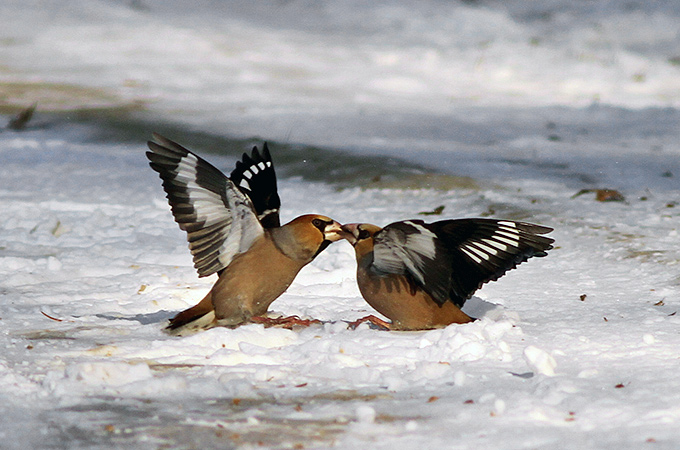
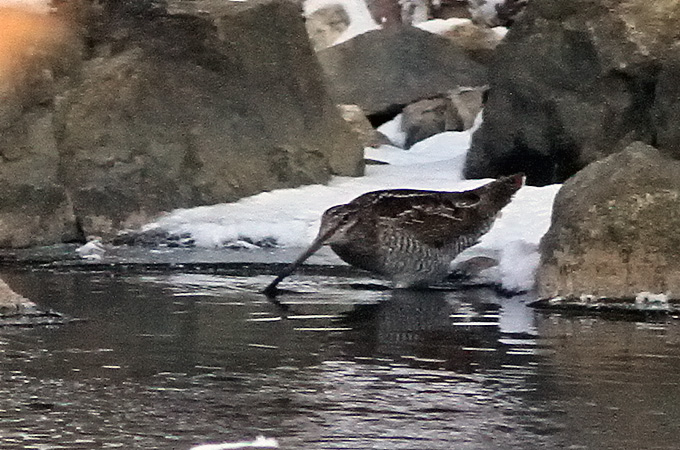

Paldang / Imjingak, January 3 and 5
A non-birding walk between Dokseo and Paldang on January 3rd noted the lone Stellers Sea Eagle (an adult) and similar birds seen by Subhojit Chakladar on the 1st, including e.g. plenty of Hawfinch and Brambling, and also e.g. an Eastern Buzzard.
Find of the day along the frozen stream was a lone Water Pipit, which contrasted strikingly with nearby Buff-bellied Pipits, showing e.g. plain greyish underparts, light speckling on the breast, and black legs: unfortunately only a few fairly distant shots were managed.
At a snow-covered Imjingak on the 5th, once again good numbers of Hawfinch, Naummann's Thrush and Buntings, also a Eurasian Nuthatch, several Chinese Water Deer, a White-tailed Eagle, and the usual bold party of Tree Sparrow.
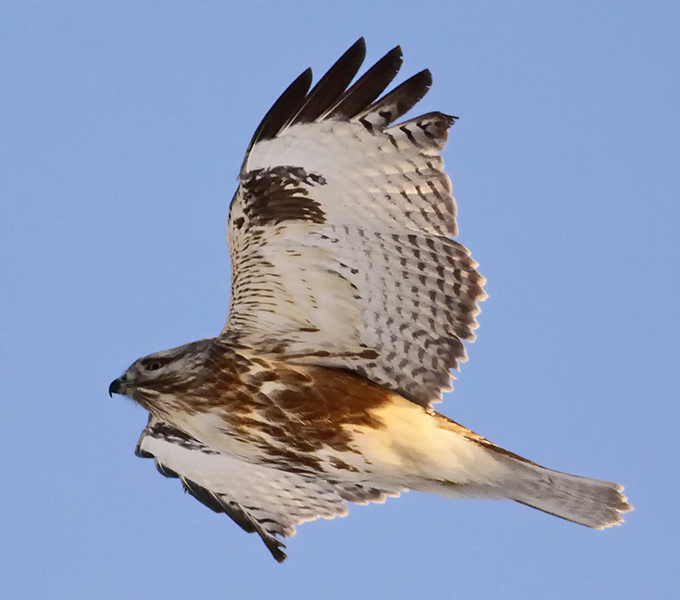
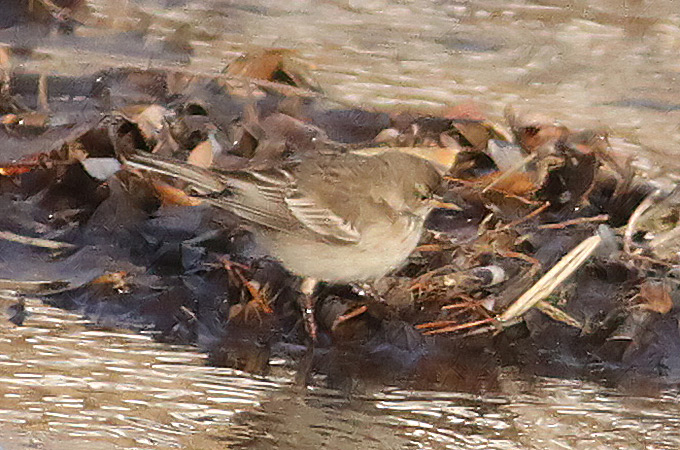
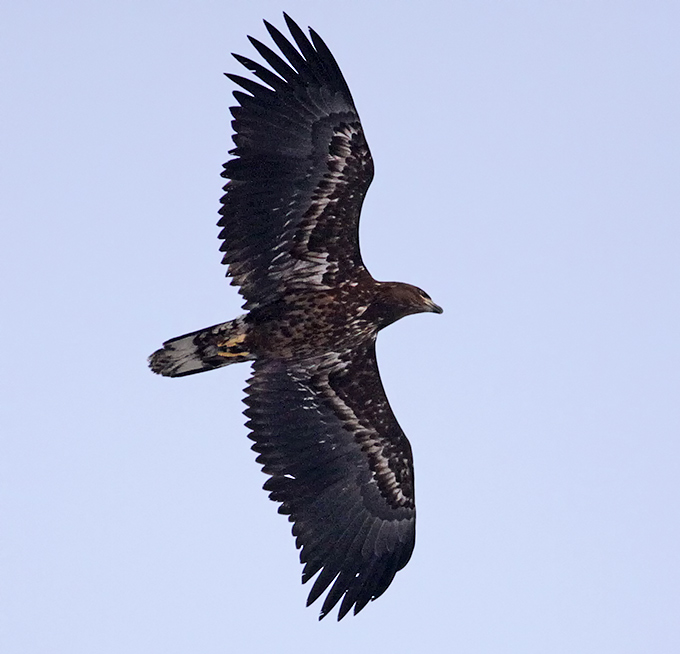
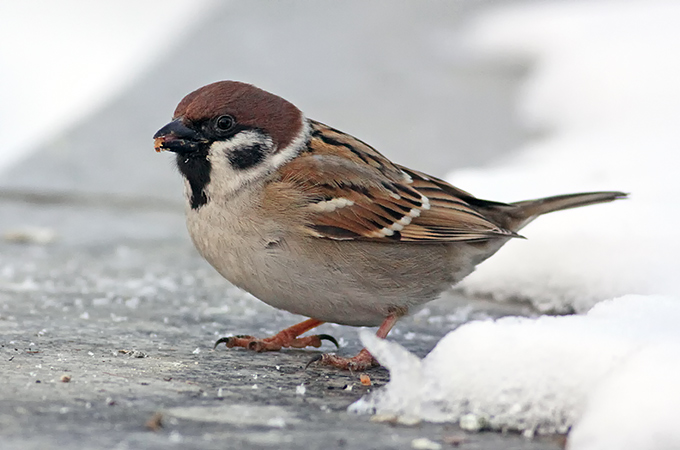
Mokpo Okam-dong, January 1
The afternoon had the stream with high tide and so not many birds to see; but today the female Blue Rock Thrush showed longer than last time. Most of the time 4 Little Grebe and 5 Eurasian Coot were "escaping" from passing pedestrians while a Grey Heron enjoyed a boat ride. Two Brown-eared Bulbul and a White Wagtail visited briefly, but 7 Grey-capped Greenfinch used a tree for an afternoon sunbath. A flock of c. 60 Bean Geese flew over in the direction of Haenam.


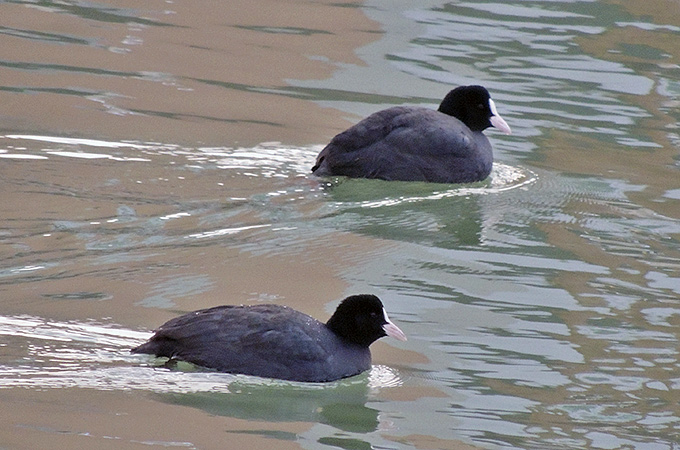
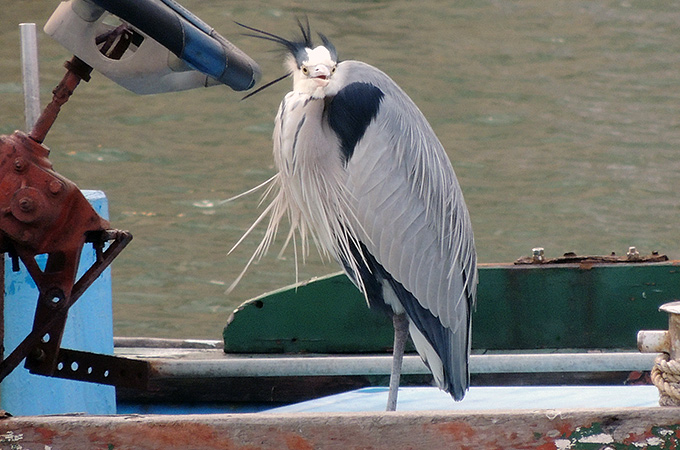

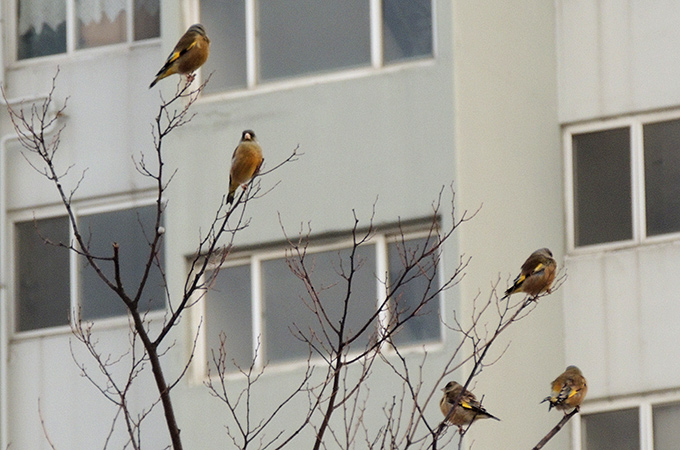
Seoul, January 1
With overnight snow painting the landscape white, I decided to check out what the Han River had to offer on New Years Day. Inspite of the bleak conditions, the year started with a bang! Just stepping out of Deokso station, a section of the river is visible which held a dark speck on the ice. At a distance of about 600m, it could only have been an eagle. A quick scan revealed a white wing patch confirming the first bird I saw this year to be a Steller’s Sea Eagle. Later, the bird came much closer, terrorizing huge rafts of Common Goldeneyes. However, the initial section of the river barely had any waterfowl except for a dozen Little Grebes. The scrubs were along the banks were much more active, with large numbers of Yellow-throated Buntings darting around and the more composed Rustic Buntings sparing me an occasional glance in the midst of feeding.
The unfrozen sections of the streams feeding the Han contained White and Japanese Wagtails, along with a party of Olive-backed Pipits, while the reeds supported a group of Oriental Greenfinch and Marsh Tits. At least 2 Naumann’s Thrush gave good views and more were heard. A Grey-headed Woodpecker was seen probing holes in a concrete wall. Waterfowl started appearing as I approached the Paldang bridge in form of rafts of Goldeneyes, Pochards, Tufted Ducks and fair number of Common Mergansers. The only other raptors of the day were a pair of Common Kestrels. Whooper Swans were also present in good numbers just before the bridge. But it was the finch bonanza that provided some excitement towards the end. Oriental Greenfinches, Hawfinches and Bullfinches (which appeared as if they were internally illuminated and the males sported an almost unearthly shade of red … perhaps accentuated by the reflections off the snow!) But the most surprising of the lot (at least for me) was a single male Chinese Grosbeak. Other birds of note were Meadow Buntings and Bramblings.
With the sun finally appearing from behind the clouds close to midday, I decided to try my luck at finding Alpine Accentors at Bulamsan. But the sight of the colorful hiking juggernaut going up the slopes dashed all my hopes. I still decided to give it a try but with slippery slopes (and without the aid of crampons or a walking stick) it was tough going. The only new birds here were Long-tailed Tits and a couple of rather noisy Eurasian Jays.
Birds Korea 1108 Ho, 3 Dong, Samick Tower Apt., 148-22, Namcheon-Dong, Su-Young-Gu
Busan, 618-762 Republic of Korea





